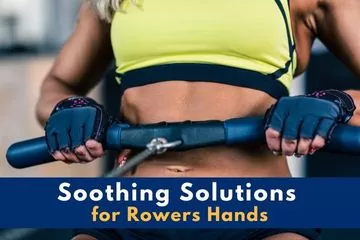
Blisters, calluses, and open sores, oh my!
Hi friends, it’s Petra, and today, I want to discuss something that nearly every rower – whether rowing indoors or outdoors – experiences blisters and open sores.
There’s no doubt that rowing can really do a number on your hands, but what most people don’t know is that you can usually take care of things before they get “out of hand”, so to speak.
If you’re reading this because you can’t stand your painful hands one more day, I hear ya!
Let me help you out with my best prevention and solutions for chapped, blistered, rough, and sore hands.
What Does Rowing Do to Your Hands?
Some people call it “Swiss Cheese” hands, others call it rowing hands, but no matter what name you stick on it, it hurts!
Even indoor rowing can do a number on your hands, but I do believe that rowing on the water does its damage twice as fast and twice as hard.
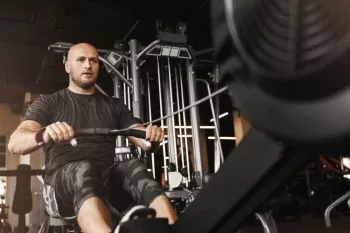
Doing the same movement over and over again causes blisters – such as blister on your heel from shoes or on your behind from that sliding seat – but it’s your hands that will suffer the most.
Even a proper grip won’t save your hands from the constant rubbing they get from the handle.
Yes, gripping the handle too hard can cause blisters, but so does high mileage. Those blisters are going to open up, and then you’ll have some real pain as your damaged skin is exposed to the air, water, and grip of the handle.
I’ve seen people get some really nasty blisters from an indoor rowing machine, so don’t think that the padded handle on an erg is any kinder to your hands than the oar handles.
Rowing causes blisters, blisters open over time, and calluses will form eventually, but in the meantime, what are you supposed to do?
Let’s talk about that next.
- Related Post: What Do Rowers Wear Rowing?
An Ounce of Prevention to Protect Rowers Hands
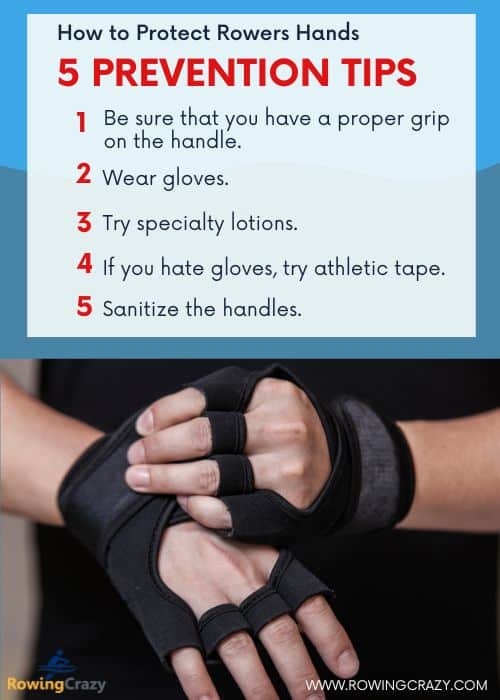
The best thing to do to avoid blisters is to prepare yourself in advance. You know rowing will cause damaged skin so start off by trying to limit the amount of exposure your hands will endure.
- Be sure that you have a proper grip on the handle. This means not too hard, not too sloppy, and definitely not some kind of death grip.
- Wear gloves. This is super important for those of you in the healthcare field where chapped skin and blisters are frowned upon. Some people hate gloves, and others swear by them, but if you get blisters because of sweat, gloves will solve that. Buy the best pair of gloves that you can afford, and you should be able to avoid the dreaded pain of blisters.
- Try specialty lotions. Lotions containing lanolin or vitamin E oil reduces sweating in your hands, keeping them soft at the same time.
- If you hate gloves, try athletic tape. This is an age-old trick many rowers use. When you feel sore areas starting to form, add medical tape to the area to prevent further injury.
- Sanitize the handles. You can avoid infection by wiping down the oar handles with rubbing alcohol (which dries quickly). For those padded erg handles, try spraying them with Lysol at the end of every rowing session.
An ounce of prevention and all that good stuff, right?
How Do Rowers Toughen Up Their Hands?
Believe it or not, you can toughen up your hands simply by continuing to row regularly.
Blisters will form, break open, then heal and form calluses. Even if you don’t create blisters, regular wear and tear result in callus formation to prevent damaged skin.
No one loves a blister, that’s for certain, but with time, your hands will develop calluses that will prevent you from having to deal with those annoying blisters and dead skin.
How Do Rowers Deal with Blisters?
We are a pretty tough bunch, my rowing crew and friends.
If you should get a blister, the main idea is to try to prevent an infection from taking hold.
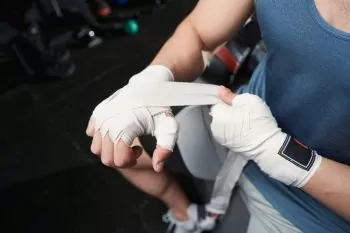
When you first see that blister, and I bet you feel the burn before you see it, try the following—
- Gently wash your hands with soap and warm water.
- Dab some rubbing alcohol or antiseptic ointment around the blister,
- Using a sterilized, very sharp needle, pop the blister open and let the fluid drain,
- Cover the blister with more antiseptic ointment and put a bandage or Bandaid on top to prevent it from becoming infected.
- Wait for 3 days or so. Once the top layer of dead skin hardens, you can cut it off.
- Apply vitamin E oil to the area to help speed up the healing process.
I’ve heard lots of other home remedies for helping a blister heal quickly, including putting wet tea bags on the blister, or you could try rubbing your hands with Vaseline each night then applying some alum powder to your hands. This is supposed to toughen up the skin more quickly.
Be sure that if your blister becomes infected, you seek immediate medical attention. It might seem silly, but unsanitary surfaces can carry ugly bacteria that can send you to the hospital if you don’t deal with it properly.
I’ve Got a Blister but I Still Want to Row
I hear this from every single dedicated rower. In fact, I can usually weed out the dedicated from the weekend warriors by seeing how they deal with blisters.
Most rowers will simply tape over their blisters and sore spots so they can keep rowing.
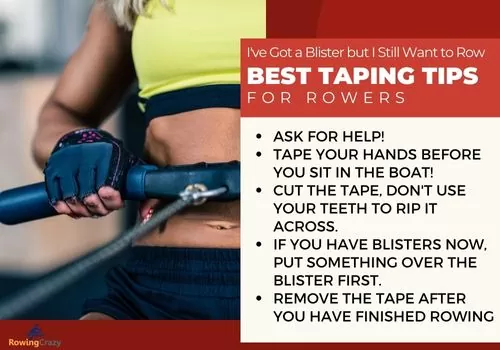
My best taping tips for my readers include:
- Ask for help! I’ve seen more people get that sticky residue all over the oar handles because they tried to tape their hands by themselves. Get someone to help you, and you’ll find that job is much easier.
- Tape your hands BEFORE you sit in the boat! Trust me, no one wants to wait while you tape up those rowing hands. I suggest that you do so about 30 minutes before you hit the water so that if some of the tape comes loose or you decide you want to add more, you can do so.
- Cut the tape, don’t use your teeth to rip it across. It seems as though rough edges from ripping the tape is where it will start to roll up when you start rowing.
- If you have blisters now, put something over the blister first, then tape over that, unless you want to scream bloody murder when you pull off that tape later. Use bandage (e.g., Band-Aid), gauze, or whatever, but protect that blister first.
- Remove the tape after you have finished rowing, and wash your hands to prevent infection.
One last tip, if the blister is pretty big (or tall), you should drain it first before taping it. Otherwise, I promise you that the blister will pop by itself very quickly, the tape will be wet, it won’t stick, and you will find yourself with a much bigger, uglier, more painful blister than you ever imagined possible.
The Bottom Line
Rower’s hands are rough and callused as they should be. You can’t row and have baby-soft hands. It’s like driving a car without wheels.
Take preventative measures to help prevent blisters, ask your coach about your grip, and use common sense when dealing with blisters.
Over time, you’ll get those nice calluses, and you will be able to simply wince when you see the blistered hands of a newbie.
Ah, the memories!
Stay fit while having fun rowing!
Written by Petra Amara – RowingCrazy.com
CEO & Founder of RowingCrazy, National Rower, Coxswain Womens Eight Team, Rowing Coach & Writer
Petra is a Mother of two and owner of Rowingcrazy.com. Petra lives and breathes rowing, she also has a passion for writing which lead her to start RowingCrazy.com to share her rowing experience and expertise with others.





